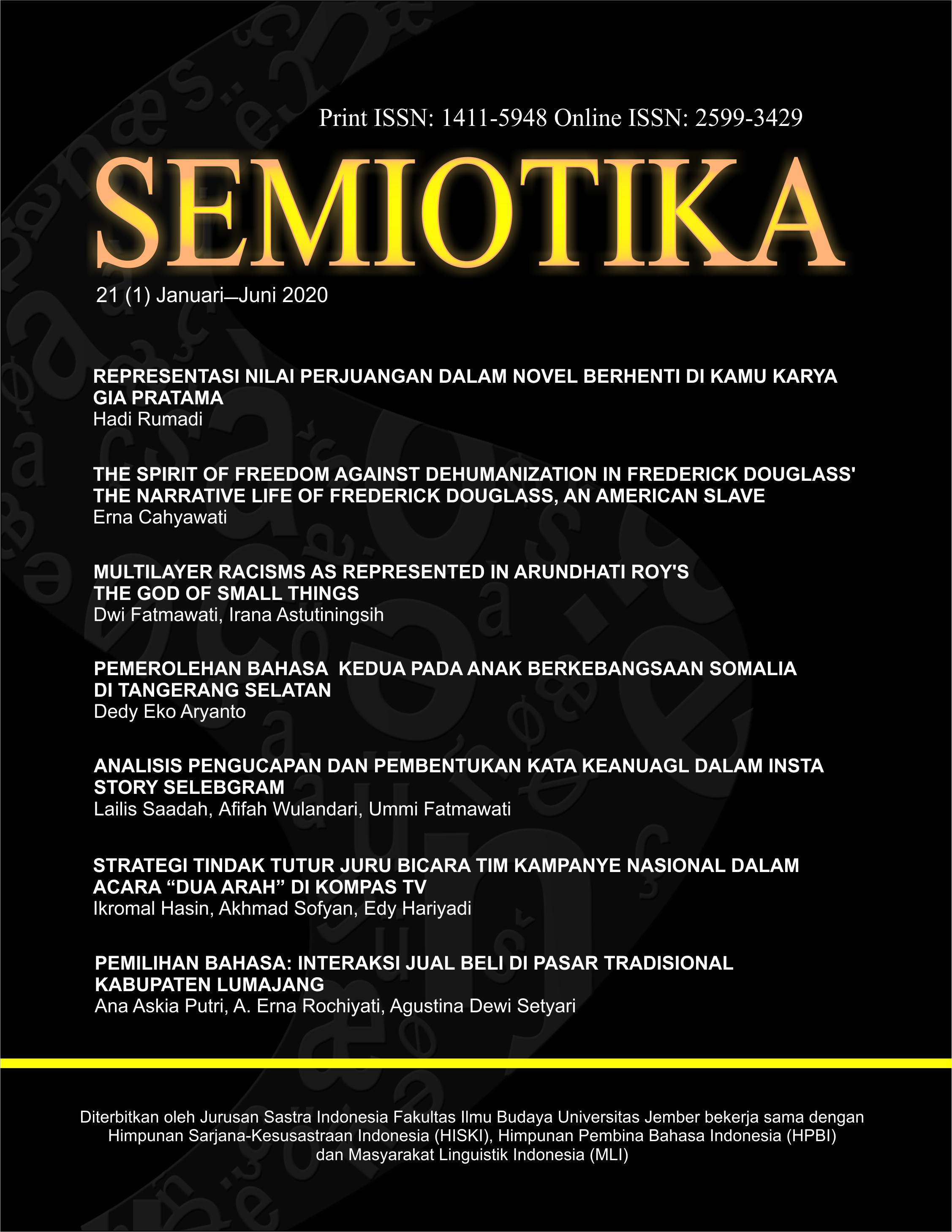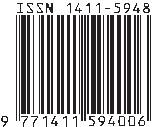PEMEROLEHAN BAHASA KEDUA PADA ANAK BERKEBANGSAAN SOMALIA DI TANGERANG SELATAN
Abstract
Ahmad, a four-year 8-month-old Somali child who lives in South Tangerang, communicates in an English speaking family, occasionally his mother communicates using Indonesian. Ahmad is unique in speaking both languages. He can speak English fluently and speak Indonesian mixed with English fluently too. The purpose of this study is to determine the second language acquisition system and forms of second language understanding for Ahmad, both in the structure of question sentences and answer sentences. The research data is in the form of language. There are words and sentences that Ahmad used when having a dialogue with the researcher and his mother. Information is collected using " Simak Libat Cakap" (involved conversation observation technique) and listening method with note-taking design and the interview to Ahmad's parents. The classified data were analyzed using descriptive-analytical methods. The results show that Ahmad is a Somali child who speaks English as a mother tongue, and Indonesian as his second language caused by family environmental factors and his mother's laundry workplace, playmates, and social media youtube and television when watching a film with his mother. Ahmad can speak Indonesian mixed with English by having the right grammatical meaning and understanding and answering the researchers' questions and his mother's questions using Indonesian. Phonologically, Ahmat cannot pronounce the sound /r/ and sound /s/. He pronounces the sound /r/ always with the sound /l/, and sound /s/ it is always replaced by the sound /c/.
SEMIOTIKA has CC-BY-SA or an equivalent license as the optimal license for the publication, distribution, use, and reuse of scholarly work. Authors who publish with this journal retain copyright and grant the journal right of first publication with the work simultaneously licensed under a Creative Commons Attribution-ShareAlike 4.0 International License that allows others to share the work with an acknowledgment of the work's authorship and initial publication in this journal.
Attribution-ShareAlike
CC BY-SA










